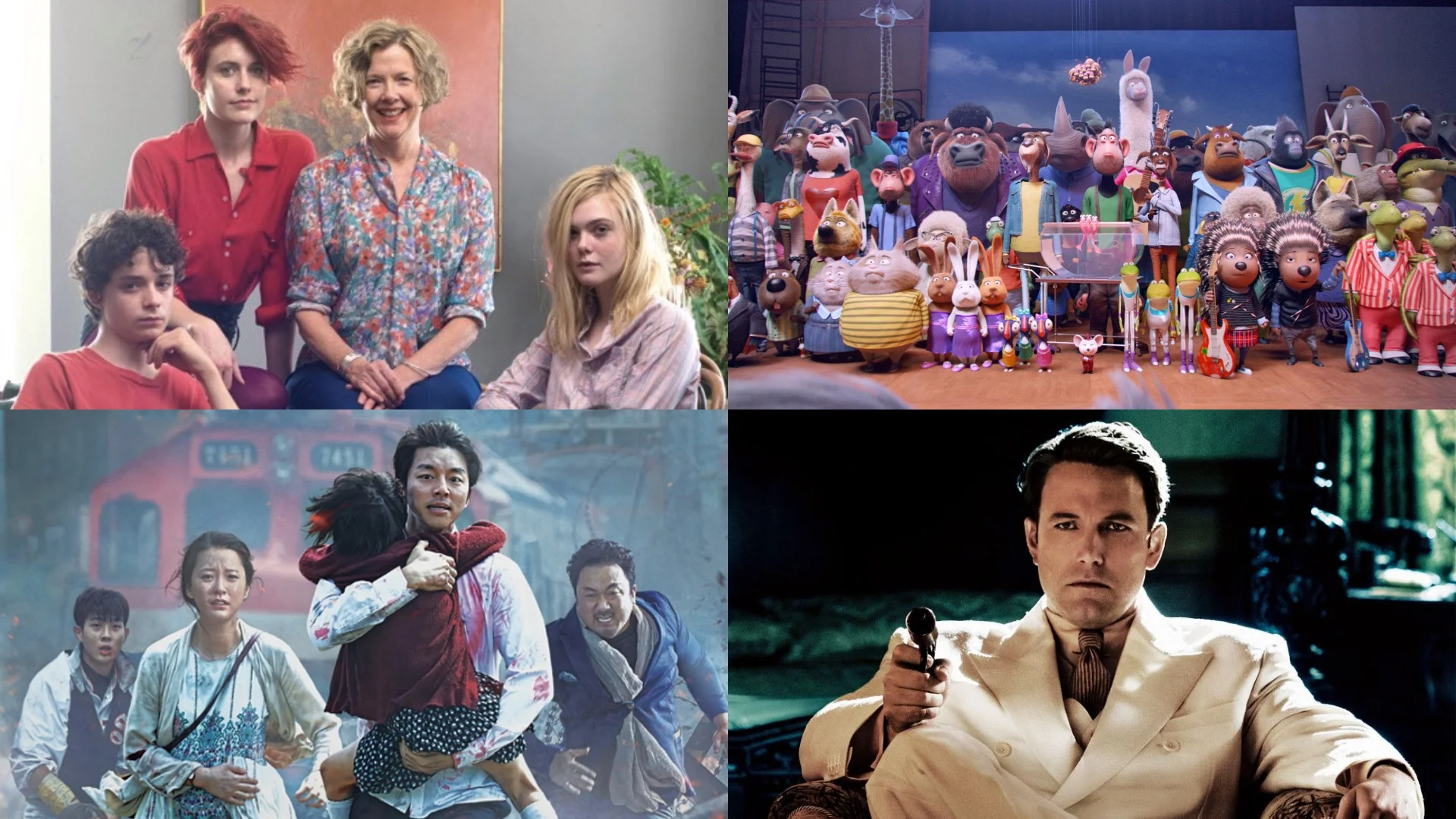Beginner’s Guide to Alfred Hitchcock: Strangers on a Train (1951)
Alfred Hitchcock often made films about “the perfect murder.” His films involved perfectly planned plots, with the killer acting on the hubris that he or she wouldn’t be caught. For example, Rear Window was an investigation into a murder that nobody would even have noticed were it not for the wheelchair-bound James Stewart. In 1951, Hitchcock made Strangers on a Train, a “perfect murder” film with a very intriguing premise. Strangers on a Train is based on the 1950 novel by Patricia Highsmith (The Talented Mr. Ripley, The Price of Salt—which was adapted into Carol). Hitchcock and Highsmith made for a delicious duo on this movie, as neither one approached the story as just a standard thriller.
Two men meet on a train: handsome athlete and political hopeful Guy Haines (Farley Granger) and the odd but charming Bruno Anthony (Robert Walker). Each man has a nagging past that is hindering a better future. Guy’s wife is pregnant by another man but won’t divorce him. Bruno hates his neglectful father. Bruno suggests they “swap murders.” They have no connection to each other, and would not be a suspect. Guy kind of laughs it off and pretends to be amused—but Bruno takes the response as an agreement. And so Bruno murders Miriam and expects Guy to return the favor.
Alfred Hitchcock explores the idea of doubles and counterparts throughout the film. Bruno and Guy are mirrored versions of each other. Guy is popular, handsome, athletic, and successful. Bruno is weird, repressed, unloved, and crazy. Miriam is a nag, while Guy’s current girlfriend Anne (Ruth Roman) is warm and compassionate. Hitchcock even connects Miriam to Anne’s sister Barbara (Patricia Hitchcock, the daughter of the director) with their similar appearance. In one scene, Bruno crashes a party at Anne’s house and pretends to strangle a woman as a joke But, when he sees Barbara, something triggers and he begins to strangle the woman for real. Hitchcock is commenting on the possibility of having a dark side, one that is always bubbling underneath.
The visual motif of doubles recurs throughout the film. There are two main characters. There is a wife and a girlfriend. There are two detectives investigating Miriam’s death. Two women characters have matching eyeglasses. Bruno has a terrible father, and Guy has a loving father figure in the form of Anne’s father Senator Morton (Leo G. Carroll). Guy is torn between two careers—tennis and politics. Two big scenes are set at a carnival. And the list of doubles in the film carries on throughout the film.
Strangers on a Train is also notable for its contrast of light and dark. Hitchcock is again being very expressive—often keeping one side of the screen lighter and the other darker. This highlights the theme of duality, and also highlights the grey space between light and dark. Hitchcock designs the mise-en-scène to reflect the constant threat of danger, and often takes Guy out of his comfort zone to interact with Bruno’s world. In one scene, Guy visits Bruno’s house in order to speak to his father; in another, Guy has to leave his own house to talk to Bruno outside. Bruno is forcing Guy to leave the polished and polite world he’s used to and enter a dangerous one instead.
Farley Granger made two films with Hitchcock: Strangers on a Train and Rope in 1948. Both films are known as Hitchcock “gay films.” Granger himself later came out as bisexual. In these two films, there is a homoerotic undercurrent. While Rope can be seen as more explicitly gay, even under the confines of 1940s Hollywood, Strangers on a Train’s subtext is hard to ignore. Bruno’s fixation on Guy can be read as homosexual attraction, though the fetishistic murder of Miriam suggests that Bruno is possibly bisexual. But, I think the homoeotic subtext is far more complicated than an unspoken attraction.
Guy’s future in politics is under threat. At first it’s because of the scandal of his leaving his pregnant wife. However, his association with Bruno could unravel his career before it even begins. The theme of a man whose life and career could be compromised because of his “relationship” with another man is grounded in reality, especially in the 1940s and 1950s during the Red Scare. The political climate at the time saw homosexuals targeted, as well as Communists. Guy’s ordeal reflects the fear of being outed or suspected. The homosexual metaphor allows for a heightened suspense; viewers feel the constant stress of being watched and carefully navigating social situations.
Strangers on a Train does not vilify the police like the previous films discussed in this column. While the police aren’t a true antagonistic force for Guy, Hitchcock does place them diametrically opposed to Guy. He doesn’t want to get caught or falsely accused, and must evade their investigations. Hitchcock stages the opposing agendas of the characters as an elegant dance, and his directorial choices reflect that precision and attention to detail. This film really grew on me. At first, I considered it entertaining but minor. Over time, Hitchcock’s direction, the screenplay, the measured performances, and the themes won me over. It’s a must-see film, and especially one that can bring in new viewers. Strangers on a Train is deceptively low-key and inarguably fascinating and intense.





